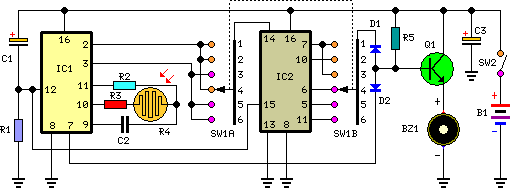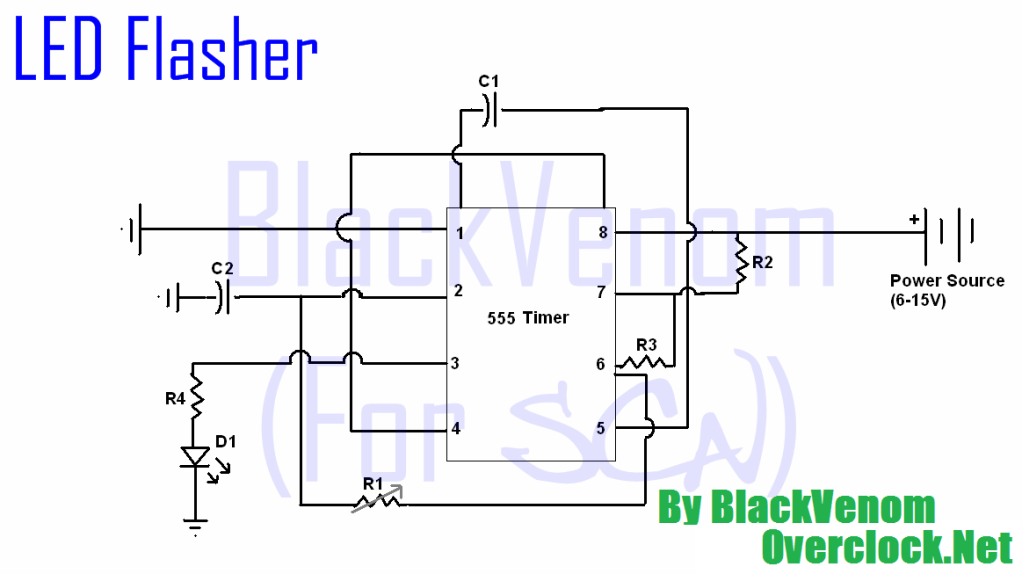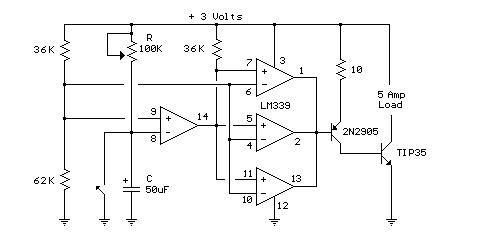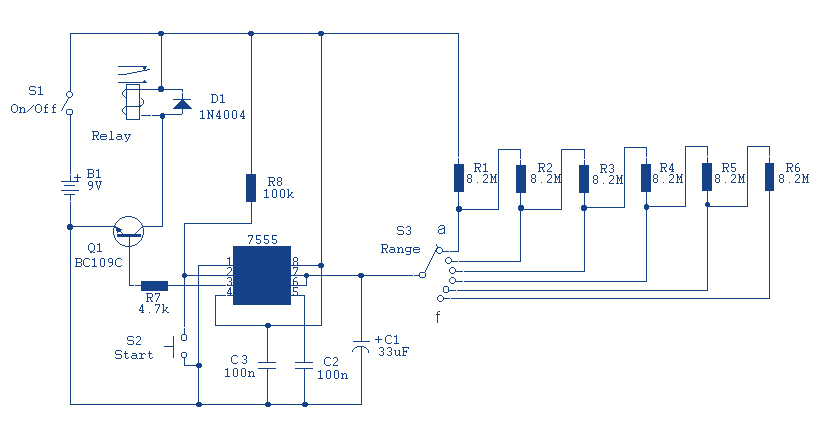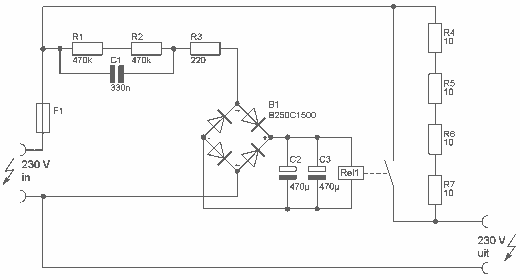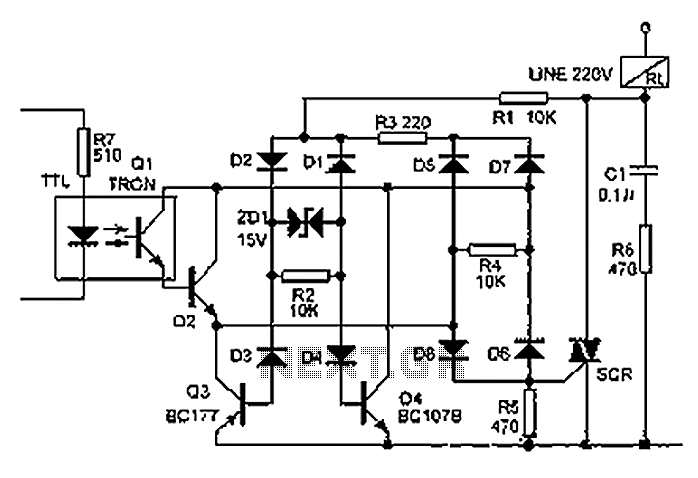
Handy Time Delay With Relay Output

This circuit is designed to provide delayed relay switching action at power on. The delay is a function of the time constant produced by the combination of components.
The circuit operates by utilizing a timing element, typically a resistor-capacitor (RC) network, which sets the delay period before the relay is activated. Upon powering the circuit, the capacitor begins to charge through the resistor, and the voltage across the capacitor increases gradually. Once this voltage reaches a predetermined threshold, it triggers a transistor or a similar switching device that energizes the relay coil, closing the relay contacts and allowing current to flow to the load.
The time constant (τ) of the RC network is calculated using the formula τ = R × C, where R is the resistance in ohms and C is the capacitance in farads. The delay time can be adjusted by selecting appropriate values for the resistor and capacitor. For instance, a larger resistor or capacitor will result in a longer delay, while a smaller resistor or capacitor will shorten the delay.
In addition to the RC timing circuit, it is essential to include protective components such as diodes across the relay coil to prevent back EMF from damaging the transistor when the relay is de-energized. A zener diode may also be incorporated to safeguard against voltage spikes that could occur during the switching process.
This circuit can be employed in various applications, including automotive lighting, industrial automation, and home appliances, where delayed activation is required to ensure proper system operation. Proper layout and component selection are crucial for achieving the desired performance and reliability of the circuit.This circuit is designed to provide delayed relay switching action at power on. The delay is a function of the time constant produced by the combination o.. 🔗 External reference
The circuit operates by utilizing a timing element, typically a resistor-capacitor (RC) network, which sets the delay period before the relay is activated. Upon powering the circuit, the capacitor begins to charge through the resistor, and the voltage across the capacitor increases gradually. Once this voltage reaches a predetermined threshold, it triggers a transistor or a similar switching device that energizes the relay coil, closing the relay contacts and allowing current to flow to the load.
The time constant (τ) of the RC network is calculated using the formula τ = R × C, where R is the resistance in ohms and C is the capacitance in farads. The delay time can be adjusted by selecting appropriate values for the resistor and capacitor. For instance, a larger resistor or capacitor will result in a longer delay, while a smaller resistor or capacitor will shorten the delay.
In addition to the RC timing circuit, it is essential to include protective components such as diodes across the relay coil to prevent back EMF from damaging the transistor when the relay is de-energized. A zener diode may also be incorporated to safeguard against voltage spikes that could occur during the switching process.
This circuit can be employed in various applications, including automotive lighting, industrial automation, and home appliances, where delayed activation is required to ensure proper system operation. Proper layout and component selection are crucial for achieving the desired performance and reliability of the circuit.This circuit is designed to provide delayed relay switching action at power on. The delay is a function of the time constant produced by the combination o.. 🔗 External reference
